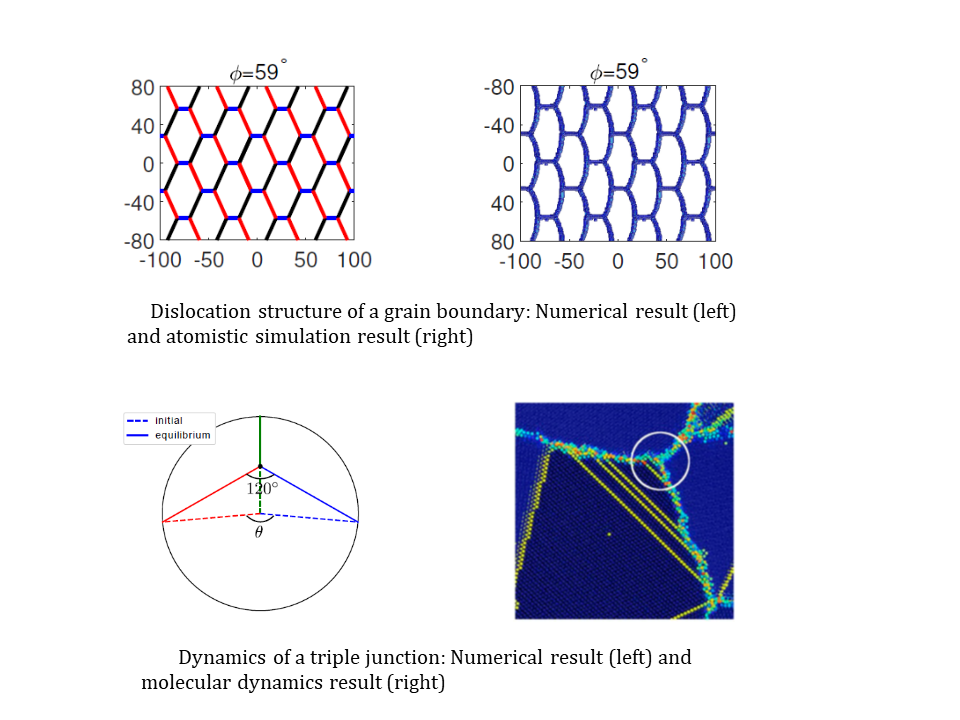This is a Hong Kong Research Grants Council General Research Fund.
Grain boundaries are the interfaces of grains with different orientations in polycrystals. Energetic and dynamic properties of grain boundaries play essential roles in the mechanical and plastic behaviors of the materials. The classical grain boundary dynamics models are based on the motion by mean curvature. Such models neglect detailed microscopic structures and mechanisms of the grain boundaries, and are not able to describe many novel phenomena such as the stress driven and shear coupling motions of grain boundaries observed recently in experiments and atomistic simulations.
In this project, we have systematically developed continuum models for the energy and dynamics of grain boundaries incorporating the underlying microstructure of line defects (dislocations or disconnections). The developed continuum models consist of evolution of both the grain boundaries and the line defect densities on them. Stress field due to the long-range elastic interaction between these line defects is included in the continuum models. Constrained optimization problems have been developed to obtain the dislocation structure and energy of a grain boundary. Efficient numerical methods have been obtained to handle the time-consuming computation of the nonlocal and singular stress field. Continuum models have also been developed for the dynamics of triple junctions in the grain boundary network microstructure of polycrystalline materials. These continuum models are able to describe the shear coupling motion and motions with a variety of driving forces of grain boundaries.
Results of this project have been presented in a plenary talk by Prof Yang Xiang at SIAM Conference on Mathematical Aspects of Materials Science (MS21), Bilbao, Spain, May 17 - 28, 2021.

Selected publications:
1. Xiaoxue Qin, Yujun Gu, Luchan Zhang, Yang Xiang, Continuum model and numerical method for dislocation structure and energy of grain boundaries, Multiscale Modeling and Simulation: A SIAM Interdisciplinary Journal, 20, 323-348, 2022.
2. Xiaoxue Qin, Luchan Zhang, Yang Xiang, A three-dimensional continuum model for grain boundary motion incorporating dislocation structure, Journal of Scientific Computing, 90, 3, 2022.
3. Luchan Zhang, Yang Xiang, A new formulation of coupling and sliding motions of grain boundaries based on dislocation structure, SIAM Journal on Applied Mathematics, 80, 2365-2387, 2020.
4. Chaozhen Wei, Luchan Zhang, Jian Han, David J. Srolovitz, Yang Xiang, Grain boundary triple junction dynamics: A continuum disconnection model, SIAM Journal on Applied Mathematics, 80, 1101-1122, 2020.
5. Spencer L. Thomas, Chaozhen Wei, Jian Han, Yang Xiang, David J. Srolovitz, A disconnection description of triple junction motion, Proceedings of the National Academy of Sciences (PNAS), 116, 8756-8765, 2019.